Find out what the propagation and garden teams have been up to this week.
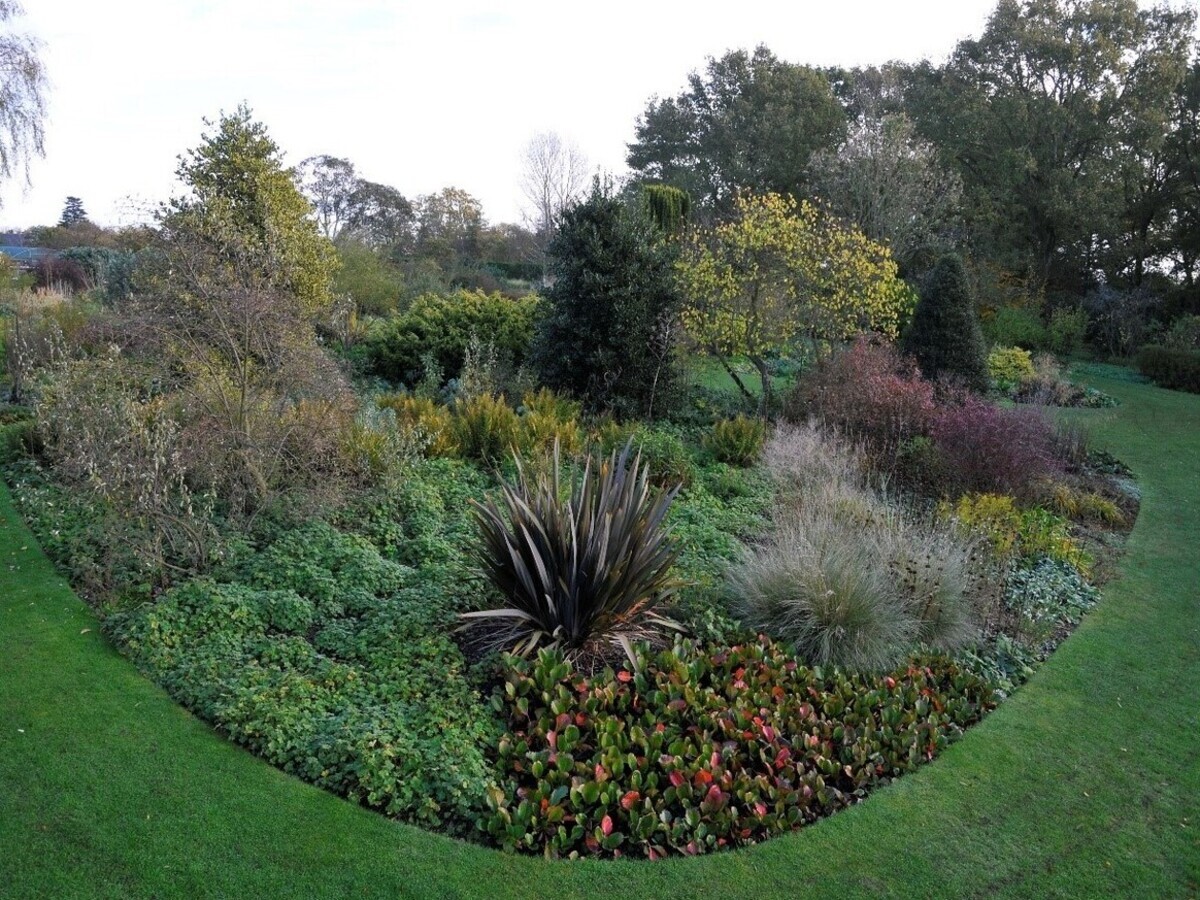
THE OLD RESERVOIR GARDEN
THE OLD RESERVOIR GARDEN
By many regarded as somewhat of a transition between the Water Garden and the Woodland Garden, the area was predominantly planted with low maintenance trees and shrubs, interspersed with a few herbaceous perennials and grasses.
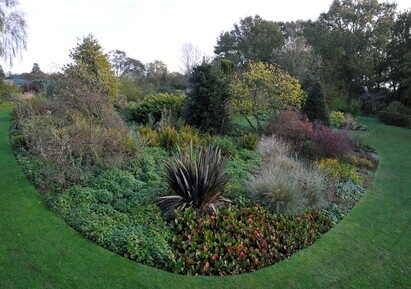
History:
The original soil was sandy gravel, overlying a subsoil of clay, not too dissimilar to the Gravel Garden.
The reservoir itself was created in 1953 by Beth and Andrew Chatto. Before it was finished, however, there was a tragic tidal surge along the East Coast. All earth-moving equipment was immediately rushed to the distressed area. As a result hills of clay, which had been scooped up from 15 ft/4.5m, were left along the bottom of the gravel slope where they stayed until the mid-1970s.
By 1970 Andrew had retired and the fruit farm had been sold off. Nowadays the reservoir belongs to our neighbouring farmer, who uses it for irrigating his crops.
It wasn’t until 1976, the year of the Great Drought, with the farmer busily enlarging the reservoir, Beth thought it seemed like a good time to level out the hills of clay.
As the mounds were being flattened she seized the opportunity to make use of some of the clay. She suggested it be spread it all over the gravel slope, which was quite the driest, poorest piece of land she had.
Wet and sticky all winter, dry and rock hard in summer – an issue we are now being able to address.
THE PROCESS OF TRANSFORMING THE RESERVOIR GARDEN
November 2014:
A wide strip of the largest island bed was cleared and the following spring plenty of organic matter was added to the soil.
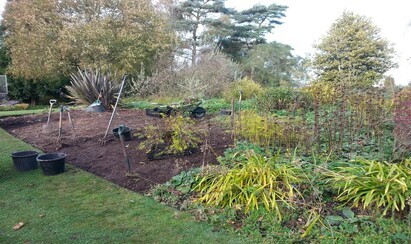
Summer 2015:
The area was used as a temporary stock bed during 2015, growing and trialling new plants.
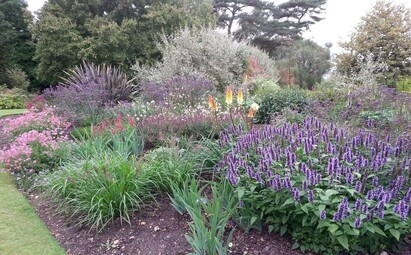
October 2015:
Work commenced clearing the three island beds. With the help of a hired digger, all plants apart from a couple of small trees and shrubs were removed along with large quantities of soil containing perennial weeds.
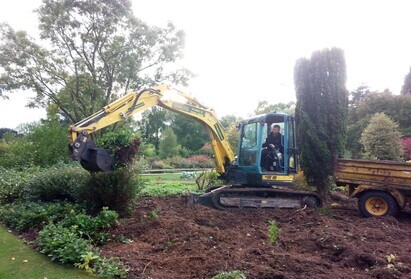
We knew it would be impossible to completely eradicate the weeds this way and that we would have to do this by hand. We were proved right when the weeds started to emerge again the following spring.
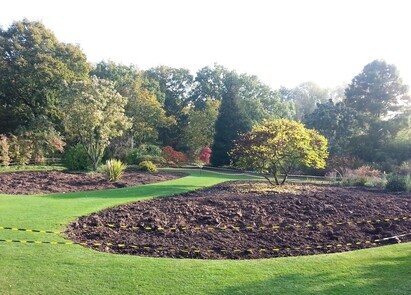
November 2015:
Strips of turf were lifted (from the path between the island beds) and are now being used to repair the lawn in other parts of the garden.
The remaining turf was then treated with a glyphosate-based systemic weed killer.
The first dose, applied very late in the season, wasn’t enough to kill the grass off, so a second dose of glyphosate was applied in late April 2016.
February – April 2016:
Plenty of perennial weeds still remained in the ground. The whole area had to be hand dug – a necessary but backbreaking and time-consuming task – to eradicate as many weeds as possible. Trying to use a machine at this stage would have multiplied the weed problem.
Never rotavate soils with perennial weed infestations, as it is a brilliant way of propagating them!
Leftover sand from landscaping elsewhere on the property was utilised and spread across the border. This wasn’t enough to improve the soil structure, but enough to help vehicles on and off the sticky soil.
A tractor with a subsoiler was used to break up the heavy clay soil.
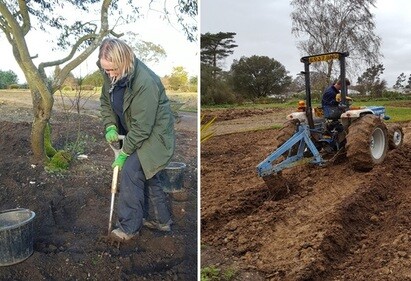
(Left) In spring the whole area had to be hand dug to eradicate as many weeds as possible.
(Right) A tractor with a subsoiler was used to help break up the heavy clay soil.
A layer of mushroom compost was spread across the whole area and ploughed into the soil.
Organic matter is the key to improving clay soils and the garden team has been working in tonnes of mushroom compost.
To ensure the mushroom compost gets mixed in properly by plough we can only add a relatively thin layer at a time. We will be adding more organic matter, but rely on the weather to stay dry as we don’t want to compact the soil any further by using heavy machinery when it’s wet.
During the second week of April we had 2.9 inches of rain!
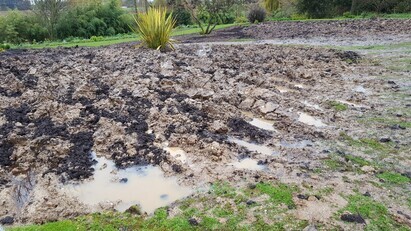
May 2016:
We will continue to add more organic matter (mainly spent mushroom compost) to the soil.
Spent mushroom compost is a by-product of industrial mushroom farming, composed of composted agricultural straw and manure, perfect for improving the texture of heavy clay soils, or adding humus to nutrient deficient soils.
Steam sterilised before leaving the mushroom farm, it will not introduce any weeds, pests or diseases.
Alkaline in nature, avoid using mushroom compost around ericaceous (acid-loving) plants.
May – June 2016:
We will create a series of new, more intimate pathways through the border.
June 2016 and onwards:
If the weather is on our side we hope to begin planting in June. However, we want to ensure thorough soil preparation before planting commences.

COMMENTS